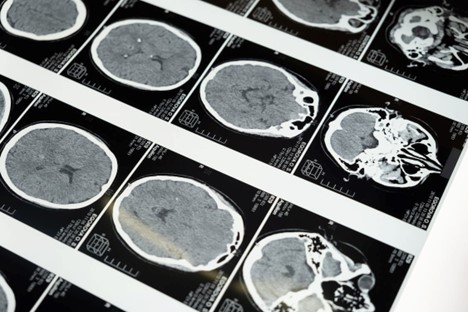Slip and fall accidents are often dismissed as minor incidents, but the reality is that they can have serious consequences. Like, traumatic brain injuries (TBIs). These are some of the most significant and overlooked outcomes. In this guide, we will explore the connection between slip and fall accidents and traumatic brain injuries. Understanding the potential risks and consequences is crucial for both victims of slip and fall accidents and property owners.
Slip and Fall Accidents
Slip and fall accidents, also known as premises liability incidents. Usually, occur when an individual loses their footing, slips, or trips on a surface, leading to a fall. These accidents often happen due to hazardous conditions or negligence on the part of property owners or occupiers. Slip and fall incidents can occur in various settings, including public spaces, private properties, workplaces, and commercial establishments.
The consequences of slip and fall accidents can range from minor injuries such as sprains and bruises to more severe outcomes. including fractures, head injuries, or traumatic brain injuries. In cases where the accident results from negligence by a property owner or occupier, the injured party may have legal grounds to pursue compensation for their damages through a premises liability claim.
Understanding Traumatic Brain Injuries (TBIs)
Traumatic brain injuries occur when an external force causes damage to the brain tissue. In the context of slip and fall accidents, this force is often the impact of the head hitting a hard surface.
TBIs resulting from slip and fall accidents can range from mild concussions to severe injuries that result in long-term cognitive impairment or even permanent disability. Here are some common types of TBIs:
- Concussion: Mild TBI with symptoms like confusion and headaches, often caused by a blow to the head or sudden movement.
- Contusion: A bruise on the brain due to the head’s impact against a hard surface during a fall, with severity ranging from mild to severe.
- Coup-Contrecoup Injury: Occurs when a fall force causes the brain to collide with the opposite side of the skull, leading to injuries at both ends.
- Diffuse Axonal Injury (DAI): Severe TBI resulting from rotational forces during a fall, causing widespread brain damage and cognitive impairment.
- Penetrating Injury: Involves an object penetrating the skull, causing direct damage to brain tissue, often resulting in severe consequences.
- Skull Fracture: Occurs when a fall causes a fracture in the skull, potentially leading to brain injuries, especially if bone fragments penetrate the brain.
- Hematoma: Collection of blood outside blood vessels in the brain, including subdural, epidural, and intracerebral hematomas.
- Edema: Swelling of brain tissue due to fluid accumulation, potentially causing increased pressure within the skull and further damage.
TBIs can manifest with immediate symptoms, such as confusion, dizziness, and loss of consciousness. However, some symptoms may be delayed, becoming apparent hours or even days after the initial injury. It is essential to recognize both immediate and delayed signs.
Long-term effects may include cognitive impairment, memory loss, mood disorders, and even increased risk for neurodegenerative conditions later in life. Recognizing the potential long-term impact underscores the importance of comprehensive medical evaluation and ongoing care for those who have suffered a TBI.
Legal Implications and Responsibilities
Property owners have a legal duty to maintain their premises in a reasonably safe condition. This duty includes addressing potential hazards that could lead to slip and fall accidents. When a property owner fails to fulfill this duty, and it results in an injury. Then liability for the victim’s damages falls on them. Including medical expenses, lost wages, and pain and suffering.
In some jurisdictions, the concept of comparative negligence comes into play. This means that if the injured party is found partially responsible for the accident. Then the compensation awarded may be reduced proportionally.
Proving negligence in slip and fall cases involving traumatic brain injuries requires a thorough understanding of the circumstances surrounding the accident. Factors such as the property owner’s awareness of the hazard, their failure to address it, and the foreseeability of the injury all play a crucial role in establishing negligence. Consulting with a personal injury attorney skilled in premises liability is vital for building a compelling case.
Preventive Measures and Risk Mitigation: Tips for Property Owners
Slip and fall accidents can have serious consequences, but many are preventable through proactive measures and risk mitigation strategies. Whether you are a property owner or manager, implementing these preventive measures is crucial for creating safer spaces:
- Importance of Adequate Signage: Clear and visible signage is a simple yet effective way to mitigate the risks of slip and fall accidents. Alerting individuals of wet floors, uneven surfaces, or other potential hazards can help raise awareness and encourage caution.
- Regular Maintenance and Inspections: Property owners should conduct regular maintenance and inspections to identify and address potential hazards promptly. This includes repairing uneven surfaces, addressing water leaks, and ensuring proper lighting in areas prone to accidents.
- Employee Training and Awareness: In workplaces, employee training is paramount in preventing slip and fall accidents. Training programs should focus on recognizing and addressing potential hazards and proper response protocols in case of an incident.
- Proper Lighting: Inadequate lighting is a common contributor to slip and fall accidents. Ensuring proper illumination in walkways, staircases, and common areas can enhance visibility, reducing the risk of accidents. This is particularly crucial in outdoor spaces during nighttime hours.
- Handrails and Guardrails: Properly installed and well-maintained handrails and guardrails on stairs and elevated surfaces provide essential support and prevent falls. Regular inspections should be conducted to ensure their stability and functionality.
Conclusion
Slip and fall accidents are not mere inconveniences but potential triggers for life-altering traumatic brain injuries. Recognizing the hidden dangers, understanding the legal implications, and implementing preventive measures are crucial steps in creating safer environments for everyone.
Whether you’re an individual seeking compensation for a TBI or a property owner looking to enhance safety measures. Proactive awareness and action are key elements in minimizing the risks associated with slip and fall accidents.


